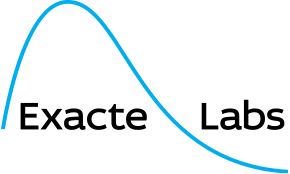Interferon status in humans. Problems of standardization of research and establishment of reference values" by Anton Lobov
We invite you to read a new scientific publication of our head of the Clinical Laboratory Anton Lobov on "Interferon status in humans. Problems of standardization of research and establishment of reference values", which is also co-authored by our staff: Ekaterina Pogodina, head of the KDL department, Polina Ivanova, leading biologist of the LRC, and Natalia Ugarova, biologist of the LRC. This is a joint publication of Exact Labs and the N.N. Blokhin National Medical Research Center for Oncology. N.N. Blokhin National Medical Research Center for Oncology and the I.I. Mechnikov Research Institute for Vaccines and Sera.
The article was published in the Russian Biotherapeutic Journal, a peer-reviewed journal, which is included in the list of approved scientific publications of the Higher Attestation Commission of the Russian Federation.
The article is devoted to the interferon status of humans and the problems of standardization of IS study with the search of possible ways to unify the method and calculation of reference values of IS parameters on the basis of a large array of data.
The article describes the IS study methodology with an emphasis on the least standardized procedures.
Interferons are the most important component of nonspecific (innate) resistance of the organism, the history of its study begins with its discovery in 1957 and continues to this day. An applied aspect of the study of interferons is the determination of individual interferon status (IS) with evaluation of leukocyte sensitivity to immunoreactive drugs. IS is a set of indicators reflecting the state of nonspecific (innate) resistance of the body.
The considered problems of the study and standardization of the IS determination method are of practical importance for the unification of the methodology and method of in vitro studies. As a result of the study we also calculated the reference values of IS parameters using 3 indirect methods. The analysis of the obtained results allowed us to identify the age groups for which it is advisable to establish reference values. The inconsistency between the obtained reference values and the previously accepted ones was shown, which testifies to the necessity of their correction. The reference values of the IS indices were updated, allowing to avoid errors in the interpretation of the results and to increase the clinical significance of the investigation.
The article can be read here.

